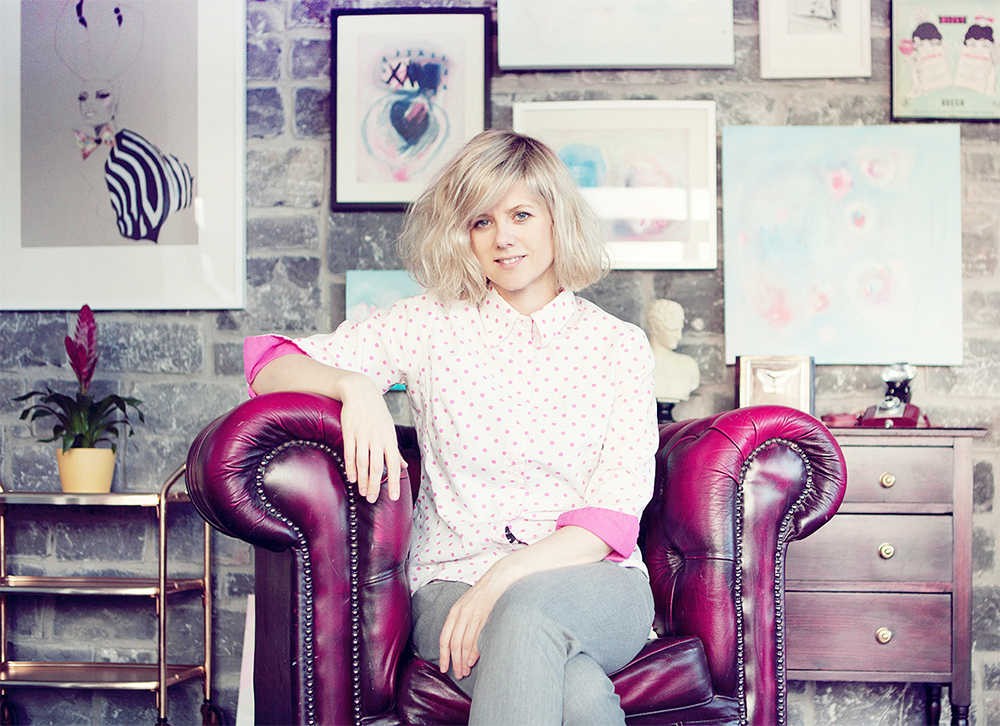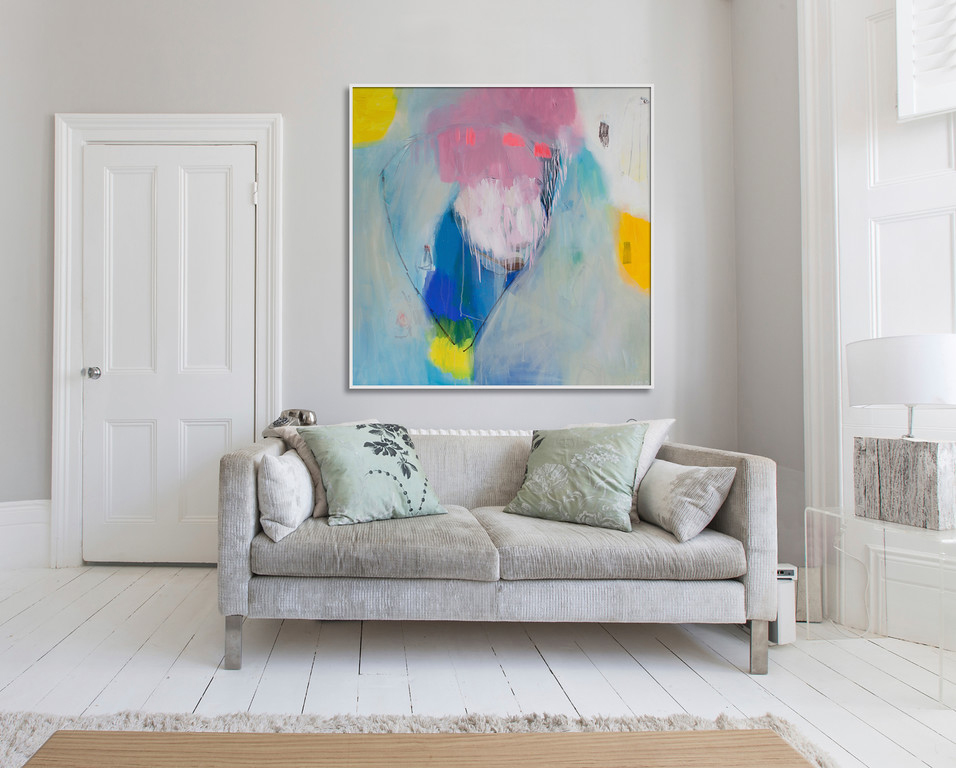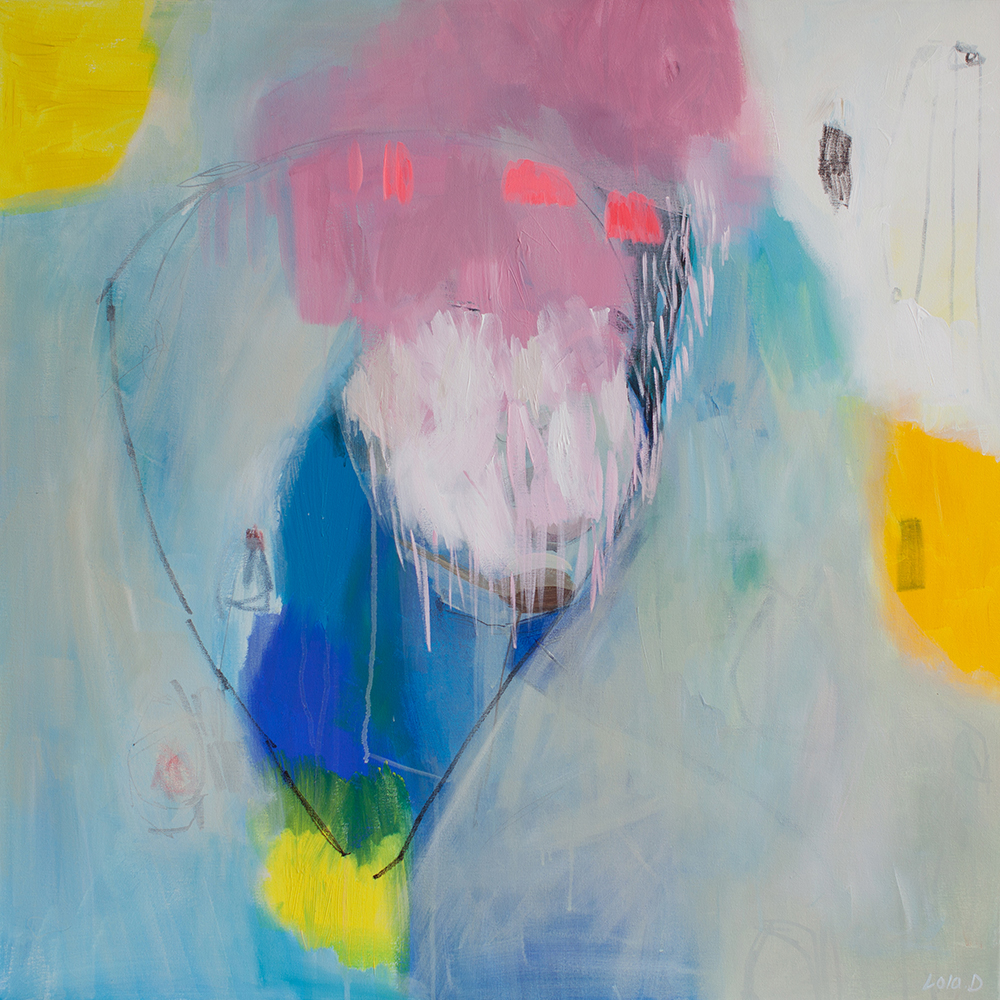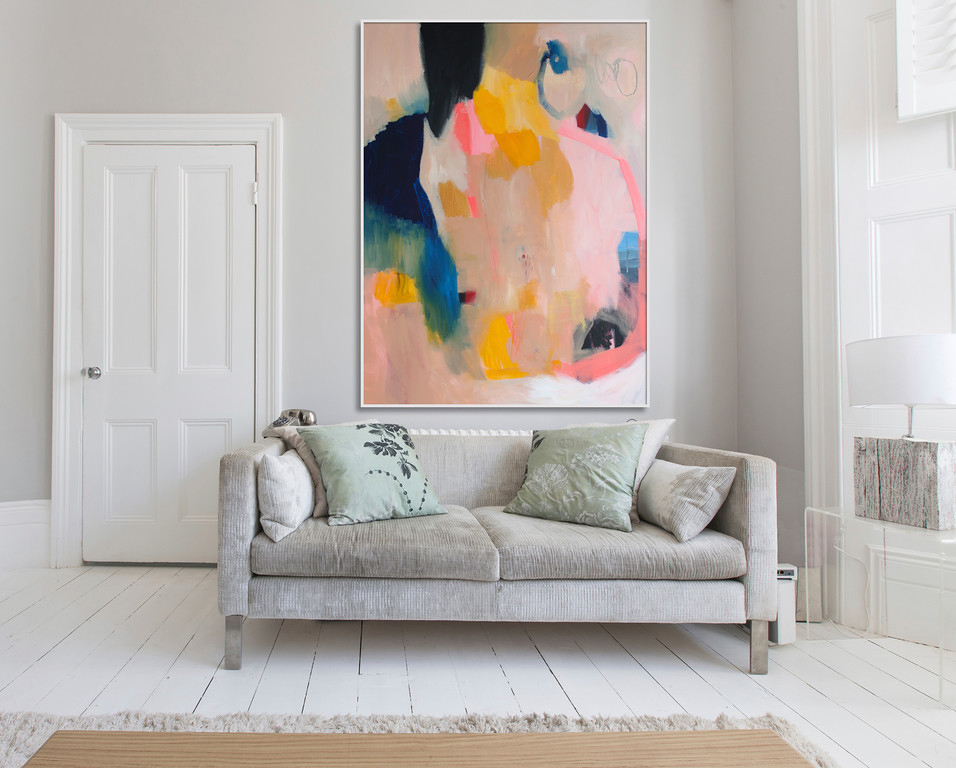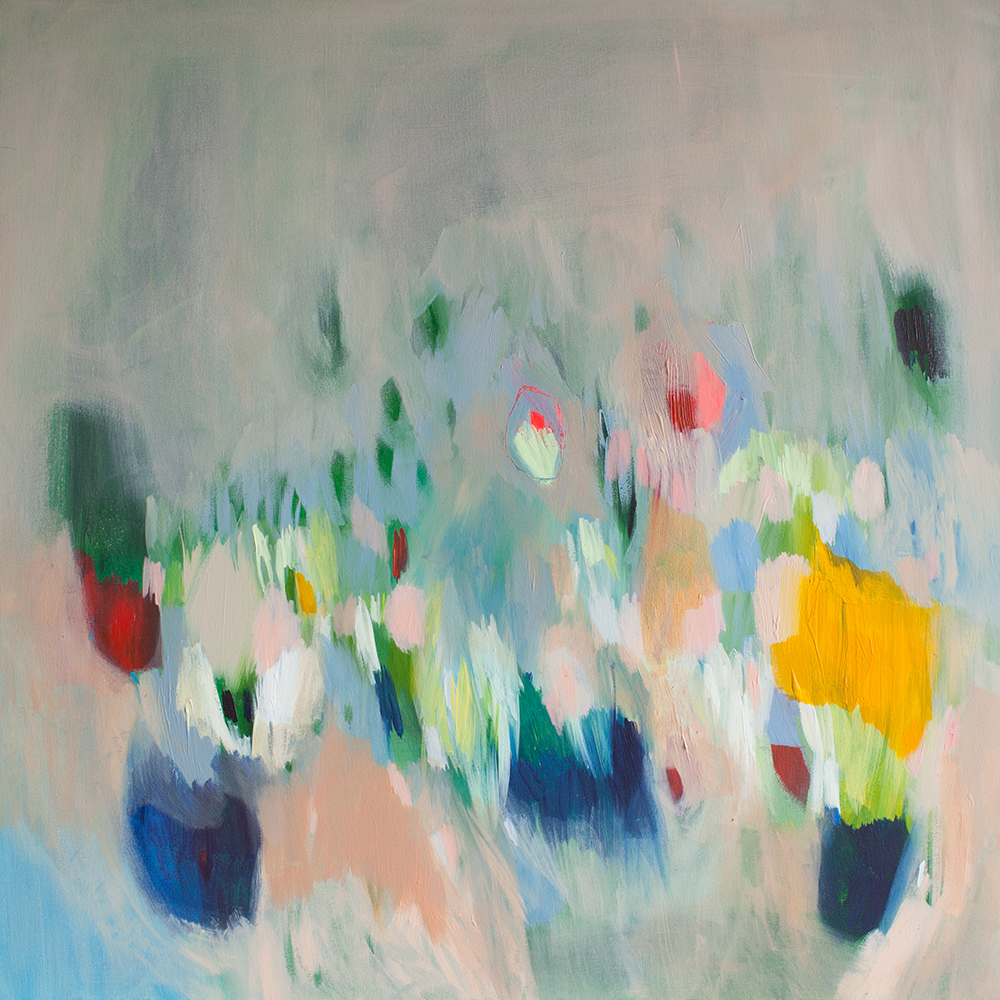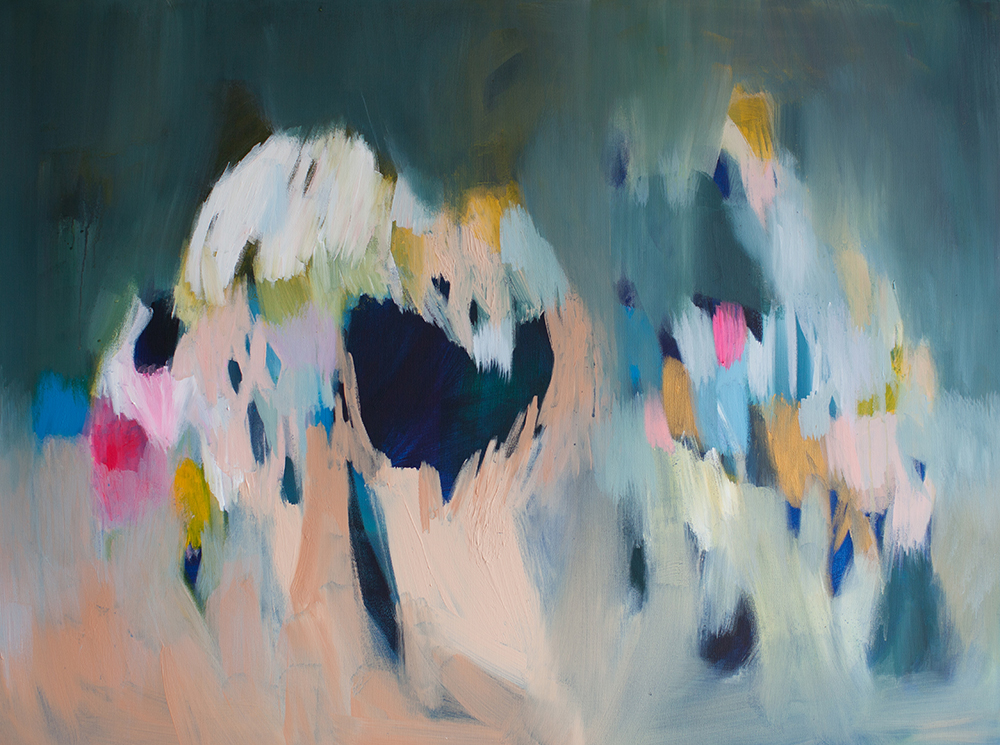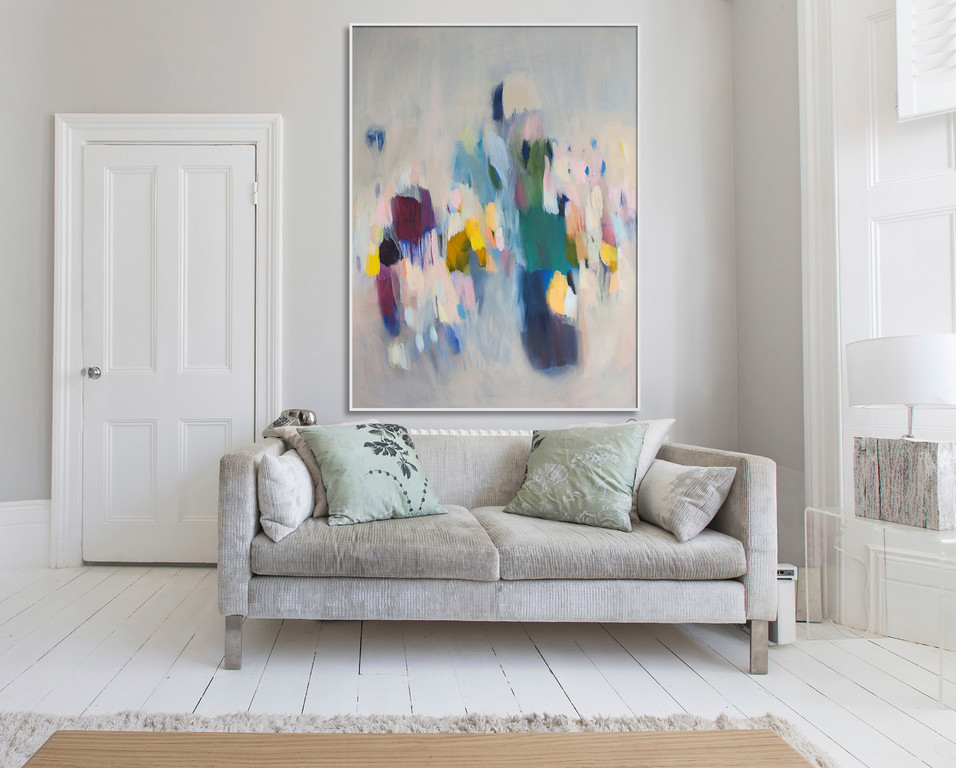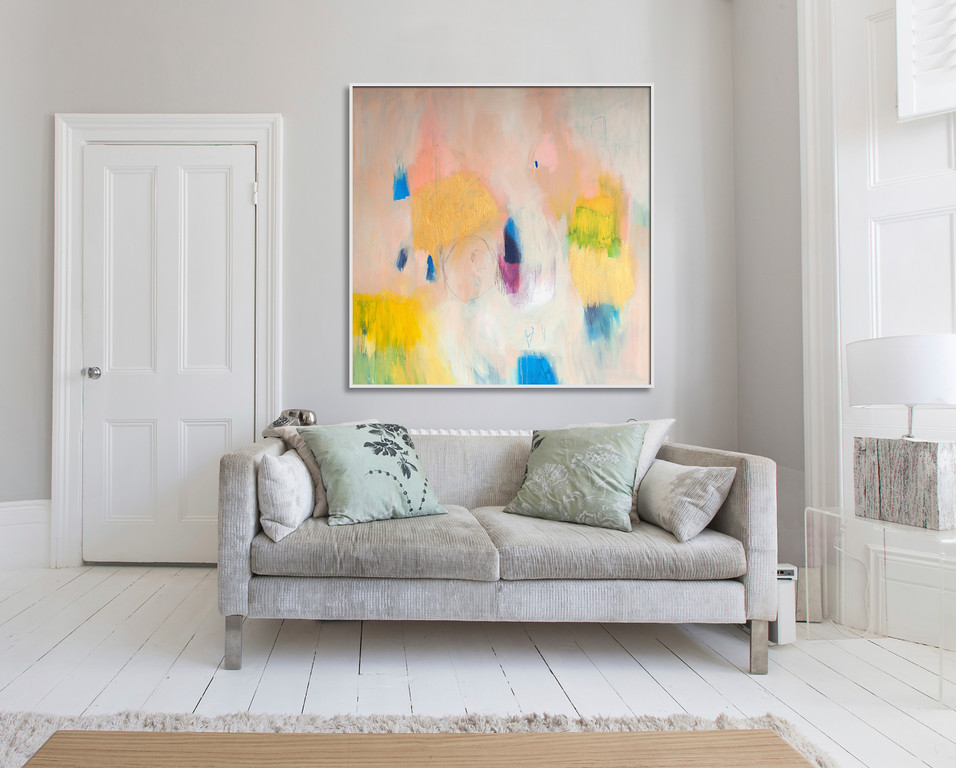A Study in Subtraction: Lola Donoghue’s Abstract Explorations
/“Céad Míle Fáilte!” reads the salutation on Lola Donoghue’s homepage. The Irish translates to “A Hundred Thousand Welcomes,” and it’s hard not to feel the alluring influence of the emerald-brushed crags of Galway outside her studio in Western Ireland. The studio is bathed in light and filled with an entire body of paintings. Each series becomes a kind of larger composition, which progresses slowly as she moves from piece to piece, adding or subtracting until she feels a sense of completion.
Her canvases are sensitive to natural light - this is to say the creamy washes, the poignant buds of hue must be bathed in the glow before they come to fruition. Here, forms soften into daubs of light, emerald greens and sapphire blues, as if blurred through a wine glass. There a red-stained form crests along a smoky horizon, or perhaps drowns in a sea of swirling mists. On another canvas, honeycomb chambers break off and morph like microscopic cells. See what you may, Donoghue’s art is abstract, focusing more on the layering process than the final image. It is what she describes as an “emerging process,” one in which subtraction and transparent washes might hide the bright hues of a sublayer until it is a mere ghost in the final painting. It becomes more of a relationship, a narrative of wash upon wash.
Lola took the time to share the philosophy of her studio and working habits, and to tell us about what inspired her new series of paintings on Great.ly.
K: Can you describe your studio space for us?
LD: I am one of those lucky people who gets to work at home. My studio is upstairs in a large converted bedroom overlooking the Irish countryside.
It’s a rectangular space, south facing and painted white, as I find it the best background to work against. On one wall, there are shelves and industrial style lockers for my supplies, and the two long walls are where I paint. My best purchase ever is my duo of blue trollies from Ikea. They are on wheels and store all the paints that I am using so they follow me around the room.
I have several paintings on the go at once, maybe 10 or 12. The end wall then is floor-to-ceiling windows, with a view of green fields, stone walls, and Knockma Hill. Depending on the season and the weather, those green fields might be dotted with sheep and cows. It has a dark wooden floor, which gets scrubbed once a month. It’s a “hands and knees with lots of elbow grease” job but is quite cathartic.
K: What kind of atmosphere do you work in, and what do you surround yourself with?
LD: It is airy and bright and filled with light. Any artist will tell you they need good light but I feel I am especially sensitive. I always have the radio on, and crank up whatever is on to get the creative juices flowing! The room is always kept warm; I am an extremely cold creature! It’s quite an open space, as I like to move around as I work, going from painting to painting. You might find me sitting on the floor, standing painting against the wall, or sitting at my easel by the window. Really, it’s the mood of the piece that dictates they way I paint. I like space for creativity but the place can become quite cluttered as I work on a new body of paintings. Once I have finished a collection, I clean the place out and start again with a blank slate.
K: What are your essential tools?
LD: Brushes, palettes, paints, oil pastels, crayons, markers , pencils, measuring tapes, the radio, my iPad. At the moment I am using leftover foamboard as a palette, but next month it could be something entirely different.
K: How did you get into fashion illustration?
LD: I did a continuing education course at the Massachusetts College of Art in Fashion Illustration. I had always loved to draw - I doodled my way through school - and I’ve always loved fashion, so combining the two was a natural step. If I hadn’t taken a Fine Art Degree in college I would have done fashion design.
K: Did you start with abstract work and then bleed into fashion illustration or was it the other way around? Either way, it’s fascinating to see the influences between the two: luxurious, Gustav Klimt hues in your paintings and abstract washes in your illustrations.
LD: Painting has always been my main discipline, my first and true love. There were a few years when I didn’t paint at all, but when I returned to art, the first thing I picked up happened to be a pencil. So I went back to basics and started to draw. While I love the fashion illustrations, I still see myself as a painter.
K: How do you think websites like Great.ly have changed how artists produce work and support themselves?
LD: I think it is hard to quantify the influence that these websites have on artists and the art world. For me personally, they have enabled me to paint full time and make a living from doing something that I love. They provide a readymade platform for all artists and creators to showcase and sell their work without having the huge expenditure of a gallery or retail space. Because of their huge online membership, artists are able to get worldwide exposure - something that in the past would have been nearly impossible to achieve.
Thanks to sites like Great.ly [which has influential users (Tastemakers) who curate collections], and also to the Tastemakers and bloggers, there is a huge shift in how people view and purchase art. Visitors are no longer dependent on brick-and-mortar galleries. It has allowed me to sell to over 30 countries. Tastemakers are at the forefront of setting the trends, and people trust their judgment. Everyone wants to know where the cool people get their stuff, and now we can know!
K: What are your inspirations, illustrators or artists?
LD: While there are so many artists that I admire, I have to say I draw inspiration from everyday life. Be it an item of clothing, a music video, a piece of furniture or a turn of phrase from a friend, it is in the ordinary that I find that certain something that might resonate in me. Sometimes, I just have to paint and it is only when I see the finished product that I realize what inspired it.
K: Can you explain a little more about your new series of abstract paintings?
Well, the Out of Her Loop series is a commentary on friends and their bonds, the relationships and the ups and downs. I think we have all been out of someone’s loop at some stage.
The Desert Dreamer series is about long distance love, and how so many people have to move away from home to find work. I have my own “Desert Dreamer” so this topic is quite personal to me
K: The transparencies, washes and hues look complex, but energetic. I like Helen Frankenthaler’s quote on painting, that “very often it takes ten of those over labored efforts to produce one really beautiful wrist motion that is synchronized with your head and heart and you have it, and therefore it looks as if it were born in a minute.” Do you relate to that?
LD: Yes, I can relate to that. Often, my paintings start off as bold, colourful, leap-off-the-canvas works. Then I employ lots of layers and washes until only certain bits remain visible. So in that sense, something that looks like a simple, delicate, detail took lots of strokes and effort to create.
K: You mention that your painting is an “emerging process” in which there is something you often discover by accident. What is that process like, an exploration perhaps without an endpoint in sight? When do you reach the point of “finished?”
LD: My paintings generally evolve through a subtractive process, beginning with lots of colour and bold vigorous brushstrokes. Then, I add both thick and transparent layers allowing for the under-painting to shine through. A lot of the time I find myself working more in the negative space than the positive. Ultimately lots of happy accidents happen along the way, and when they do, I let myself run with them.
Knowing when it is finished . . . well this is something all artists struggle with. Like all things in life it’s hard to know when to step back and leave well enough alone! Fresh eyes and time - walking away and leaving it overnight or for a few days - always helps me to see it objectively.
When the painting gets to a certain point and I decide I like parts of it but it’s still unfinished, the painting can suddenly seem precious. This can be a dangerous point for me as I can often get stifled. Sometimes I just paint over it - the piece that I loved - and it releases me to renew the creativity that I had when I started.
Add one of Lola's paintings to your space: Great.ly
